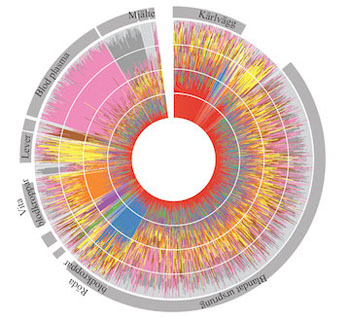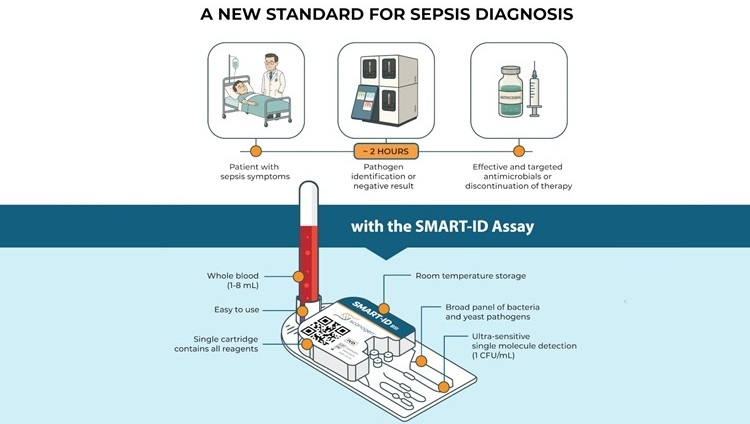Protein Patterning: Novel Tool for Studying Sepsis
By LabMedica International staff writers
Posted on 19 Jan 2016
In a new approach using quantitative targeted proteomics, researchers have for the first time developed a way to use mass-spectrometry to measure hundreds of organ proteins in a single blood sample. The resulting protein patterns can help determine sepsis severity, which organs have been damaged, and may lead to faster diagnostics.Posted on 19 Jan 2016
“We use the blood as a mirror reflecting what happens in the body,” said Johan Malmström biomedical scientist at Lund University (Lund, Sweden), whose brothers, medical intern Erik Malmström (Lund U.) and bioinformatician Lars Malmström University of Zurich (Zurich, Switzerland) are fellow researchers on the study. The team has succeeded to map the majority of all detected proteins from vital organs (e.g., heart, lung, liver, spleen, blood vessels) and have listed which proteins were specific to each organ.

Image: Graph of mass-spectrometry-based mapping of tissue-specific protein in blood plasma, from the study of sepsis using quantitative targeted proteomics (Photo courtesy of Malmström laboratory, Lund University).
“If you see in a blood sample that the amount of proteins from a specific organ significantly increases, it indicates damage to this organ. The method provides an understanding of the molecular events that take place during the course of a disease, and the possibility, using the same analysis, to study how different organs are affected”, explained Dr. E. Malmström.
Sepsis is a very complicated and precarious condition in which the immune system starts to react erroneously in different ways to the bacterial infection. It is often difficult to diagnose because symptoms (including high breathing rate, fever, rapid pulse, pain, confusion) occur in milder conditions as well. Disease progression can be very fast and become fatal within a few hours. Therefore, there is a great need for faster diagnosis and better understanding of the course of the disease.
Another researcher, Dr. Adam Linder (Lund U.), has begun to develop a diagnostic method based on HBP, a protein emitted from white blood cells and reflects the risk of hypotension. The Malmström group’s study of hundreds of different proteins could eventually be used to select other important proteins that can serve as biomarkers for different aspects of sepsis.
The new method is already an important research tool: “There is so much we don’t know about sepsis. Why do not all patients react the same way—why do some organs suffer the most damage in some patients and not in others? Do different bacteria cause the disease to progress? Can you divide patients into different subgroups, or bacteria, or does each new combination of patients and bacteria lead to a specific form of sepsis?” asked Dr. E. Malmström. The researchers have conducted their studies on animals and are now moving on to human tissue. Through a collaboration with surgeons at Skane University Hospital they have obtained samples of healthy tissue. Protein patterns of these samples can then be compared with the corresponding organ tissues in sepsis patients.
“Protein mapping like this has never been done before. The method can also be applied to other diseases for studying how pathological changes in various organs are reflected in a blood sample,” said Dr. Johan Malmström.
The study, by Malmström E, Kilsgard O, Hauri S, Smeds E, Herwald H, Malmström L, & Malmström J, was published January 6, 2016, in the journal Nature Communications.
Related Links:
Lund University
University of Zurich














